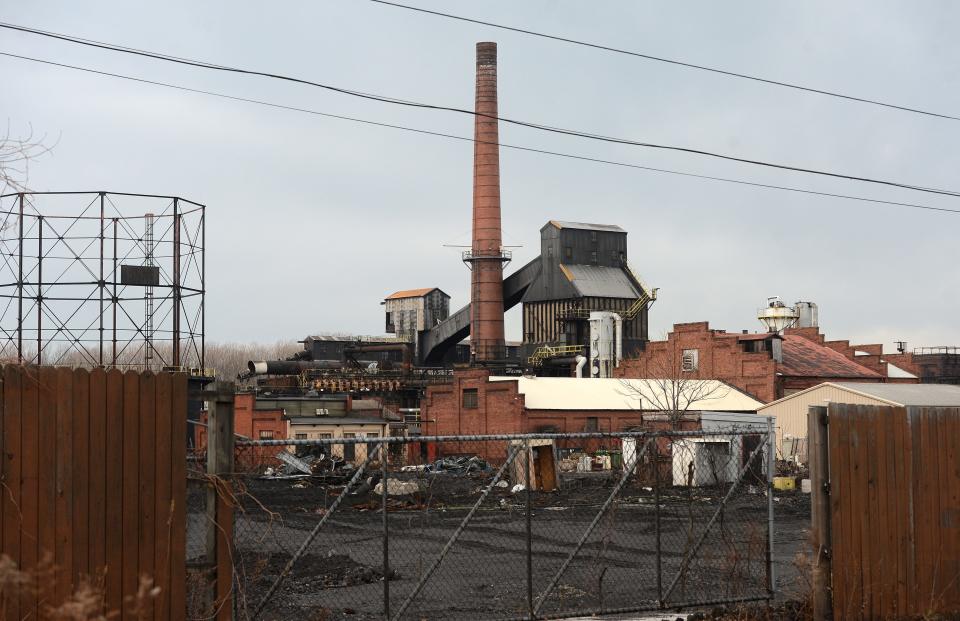Erie must seize its place in the emerging green economy for health, equity and prosperity
If only Earth Day were like Groundhog Day, where we have a chance to repeat the day until we get it right.
Earth Day 2023, observed on April 22, is a repeat of the exact same theme as last year: "Invest in Our Planet." This is not an accident. The Earth Day theme emphasizes how "investing in a green economy is the only path to a healthy, prosperous, and equitable future." Erie has the vision. Now is the time for Erie to say, "Show me the money."
How does this translate to Erie County, Pennsylvania?
Erie County's historic industrial and shipping industries depended on Appalachian coal, which is gone. Today, our region's current focus on plastics manufacturing ties Erie to the oil and gas industry, which is dying. We need a long-term, sustainable strategy, and an emerging clean energy economy that not only brings a healthier environment to Erie but also gives Erities more choices for their energy and careers.
Climate change is local
Erie is one of the ten fastest-warming cities in the United States. From 1951 to 2019, Erie County experienced a 23.5% increase in annual precipitation. Severe weather events, like recent record-breaking blizzards, high winds, heavy rains, and extreme temperatures, are likely to become more intense and erratic.
These climate shifts significantly impact human health, local infrastructure, natural resources, and local tourism and agricultural industries. For example, scientific studies link warming lake waters to the growth of harmful algal blooms that threaten human health and water-based tourism. According to the U.S. Environmental Protection Agency, warmer temperatures prevent water from mixing, allowing algae to grow thicker and faster.
Think about your neighbors. Erie's children, older adults, communities of color, and those in misrepresented groups are at greater risk of negative impact by climate change and extreme weather. We must work together to prevent further harm from climate impacts, prioritizing Erie's at-risk populations.

Climate action must also be local
The Intergovernmental Panel on Climate Change's most recent report shared that the world is on track to surpass the dangerous tipping point of 1.5 degrees Celsius global warming within a decade. Though a warming climate has fundamentally changed our planet, we have the technology to avoid this tipping point if we act now.
Climate action requires effort and collaboration by everyone — government, businesses, academic institutions, nonprofits, and households. Though local governments often have limited funding and reach, their ability to bridge partisan divides, steward multi-sector relationships, craft place-based solutions, and control land-use regulations position them well for climate and environmental action.
PennFuture and its partners in the Our Water, Our Future Common Agenda recognized the power of local government to effect change. The largest share of the Agenda's recommendations to protect the Lake Erie watershed and its residents, including against climate impacts, focus on municipal and county levels.
In recent years, Erie area leaders have taken serious steps to reduce fossil fuel emissions and prepare for extreme weather. Examples include the installation of solar panels on Erie Central Fire Station, the passage of a City of Erie stormwater fee ordinance, the creation of the Millcreek Township Department of Community Relations and Sustainability, the closure of longtime unlawful polluter Erie Coke, formation of the Green Building Alliance Erie 2030 District, and a move by Erie's largest industrial employer (Wabtec) toward greener locomotive technology.
More: Wabtec picks up steam as focus moves to new lines of work
These are foundational steps for the Erie region, but the extent and pace of our action must increase.
Opportunities for Erie County climate action
Collaborating on climate action initiatives is not new for our region. Many neighboring communities have focused on collaborative climate action for over a decade. Specifically, the cities of Pittsburgh, Pennsylvania, and Evanston, Illinois, have had community-driven climate action plans since 2008.

Communities like these are now well-positioned to compete for the multitude of federal funds prioritizing clean energy and green economic development. The Infrastructure Investment and Jobs Act (IIJA) and Inflation Reduction Act (IRA) invest billions of dollars in tackling the climate crisis, creating good-paying jobs for cities with clean energy economies.
Erie is leaving a lot of federal investment dollars on the table by not taking action. Erie needs to advocate for its fair share of funding.
What's next for Erie?
Erie has a framework — "turn-the-corner feel" and "reemergence" — to build off. Commitments to diversity, equity, inclusion, and justice by the Mayor Joe Schember Administration and investment downtown are big pieces to this goal; however, Erie needs long-term, community-driven climate goals to be successful.
Opportunities to do so are already in process: both the city of Erie and the Erie Metropolitan Transit Authority have committed to their first climate action planning initiatives. Bruce Katz and his firm, New Localism Associates, created the Investment Playbook for Infinite Erie and brought together support from public and private entities. County Executive Brenton Davis also contracted Katz to create a "blue economy" playbook for Erie's waterfront. These projects are ripe for an emphasis on climate action, especially given a central focus on federal funding. New Localism regularly provides technical assistance and recommendations for local climate action. What Erieites need now is for Erie to capitalize on this expertise.
We can chart a better environmental and economic future for Erie, but we have to start. The pieces are there; we need the community to put pressure on elected and institutional leaders to work collaboratively to put them together.
Pat Lupo, OSB, is a member of the Benedictine Sisters of Erie and a longtime Erie environmental leader, activist, and educator. Jenny Tompkins is the Erie-based campaign manager for clean water advocacy at PennFuture, a statewide environmental organization with five offices across Pennsylvania.
This article originally appeared on Erie Times-News: A green economy can promote health, equity and prosperity in Erie

